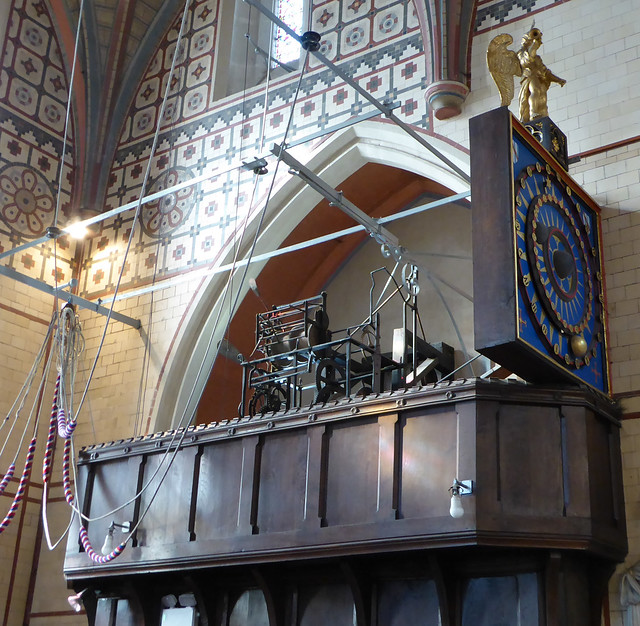It was a rare, cloud-free evening in mid-February earlier this year and I had stopped to gaze up at the sky, by now a deepening dark blue. Although the sun had set nearly an hour previously, vestiges of light lingered in the west and only the brightest stars were visible. Almost directly above me, though, it was the Moon that captured my attention. It was bright and well defined that evening and just over half illuminated. I gazed upwards for a while and this set me thinking about our relationship with this celestial body.
The Moon is the Earth’s only natural satellite and the only place away from the Earth where humans have set foot. It orbits our planet at a distance of 384,400 km and although that may seem a long way away, the Moon influences life on Earth to a surprising extent. It is the main driver of tides on the Earth setting up important rhythms that dominate lives lived near the sea. It can also influence the timing of migration and reproduction in the non-human world. Its prominence in the Earthly sky and its regular phases (new Moon, full Moon etc) have given the Moon great cultural significance influencing ancient religions as well as many artists, musicians, poets and writers.
Before the advent of widespread street lighting, the Moon was the only source of night time illumination. Travelling in the dark, without moonlight, was hazardous and evening social gatherings were often planned to take advantage of a full Moon. Nowadays, darkness features less in our lives and awareness of the phases of the Moon and the night sky is minimal. Despite this, everyday speech still contains references to the Moon in terms such as “once in a blue moon”, “over the moon”, “honeymoon” and “lunacy”.
The Moon was uppermost in my mind that evening because, the following day, we were booked to visit the Museum of the Moon exhibition in Exeter Cathedral. This exhibition featured UK artist Luke Jerram’s massive travelling artwork depicting the Moon. Jerram’s artwork had already been exhibited in several other places locally including Bournemouth, Sherborne, Taunton and Wells.
When we arrived in the Cathedral Close that morning, a small queue of people, each wearing a mask, had formed at the entrance door. After a short delay we were ushered in and were immediately confronted by the huge pale sphere. It hung between the roof and floor of the Cathedral, almost filling the vast space, dominating the view and capturing our attention. Most people reacted with surprise and there were audible exclamations of “Wow! or Gosh!”
Luke Jerram’s Museum of the Moon is a massive blue-grey globe, seven metres in diameter with a mottled surface, depicting the geography of the moon. The artwork is a 1/500,000 scale model based on precise lunar imaging from NASA combined with modern printing techniques and with internal lighting to create as realistic a representation as possible. In Exeter Cathedral, it was accompanied by a soundtrack specially created by composer Dan Jones.
We walked around the installation, looking from different directions, trying to take it in, not quite sure what to make of it. We weren’t alone, though, as there were quite a few people about that morning making it feel busy. Small children were running here and there, lying down beneath the huge sphere to look up, shrieking. School children, some in uniform, were drawing, colouring in shapes. Adults were standing, looking, holding their phones up to capture images. Some adults also wanted to lie down and “moonbathe”, but adults don’t, do they?
Luke Jerram’s Moon is a great concept but I wasn’t as impressed by it as I thought I would be. Perhaps in today’s culture where we are barraged with so many graphic images it is difficult to impress? Perhaps having witnessed the first Moon landings half a century ago it is hard to better those moments? I also found it difficult to concentrate on the artwork with all the other people, noise and movement around me. Despite these comments, it was good to see the children running about, enjoying the installation and engaging with its ideas. Perhaps that’s what we should all have been doing?
It’s also difficult for any artwork to compete with the splendour of Exeter Cathedral and I couldn’t help being drawn away from the Moon to gaze at the architecture, the medieval vaulted ceiling, the colourful roof bosses, the stained glass and some of the memorials and chapels. It felt as though having the Moon artwork there made me look afresh at the Cathedral. In the end, we stayed for more than an hour suggesting that we were very engaged with the totality of the experience.
One of my favourite artefacts in Exeter Cathedral is the Astronomical Clock. Dating from the 15th century but still in use, the main face of the clock shows the hour in its outer dial and on the inner dial the days of the lunar month (the time between successive new Moons). The sphere representing the Moon also rotates to show its phase. When we visited, the Moon on the clock was roughly half illuminated, very similar to what it had been in reality the night before. Despite these obvious references to the Moon, I noticed no attempt to link the Astronomical Clock to the artwork and, for the visit of the Moon to Exeter Cathedral, this was a missed opportunity.
Overall, though, Luke Jerram’s Museum of the Moon has been a huge global success having been presented more than 250 times in more than 30 countries (there are several Moon artworks circulating) and experienced by more than 10 million people. The Museum of the Moon is still on the move inspiring different creative responses wherever it appears. One of its notable recent outings has been at WOMAD 2022 where it was accompanied by an immersive sonic experience inspired by the ethos of the Festival and composed by Yazz Ahmed.
For many who have witnessed the artwork, this will have been their most intimate interaction with the Moon generating considerable new interest in this celestial body. Hopefully, this will have gone some way towards reconnecting people with their only natural satellite.
This article appeared in the August edition of the Marshwood Vale Magazine.










